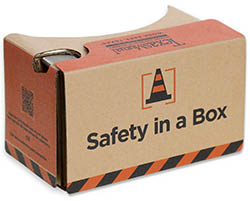Motor vehicle accidents
Hazard:
Of all the hazards oil and gas workers face, the most dangerous is something they consider second-nature: driving. Motor vehicle fatalities in the oil patch are eight times higher than in other industries.
Controls:
- Wear your seatbelt all the time, and make sure passengers do the same.
- Control your speed, especially when visibility is poor, you are hauling awkward loads or roads are slick or in poor condition.
- Put away cell phones and other distractions.
- Do not drive drowsy. If you feel yourself getting tired, ask a passenger to drive, or pull over to a safe place and rest.
Watch this series of 60-second videos on safe driving
Burns
Hazard:
Flammable vapor and liquids, hazardous chemicals and hot work operations are common sources of burns in the oil industry.
Controls:
- Implement and enforce a hazard communication program for handling chemicals.
- Wear required personal protective equipment cutting, welding and handling chemicals.
- Inspect tools, cords and plugs before use, and remove damaged items from service.
- Follow lockout/tagout procedures.
Struck-by, caught in-between injuries
Hazard:
Workers might be exposed to struck-by/caught-in/caught-between from moving vehicles or equipment, falling equipment and high-pressure lines.
Controls:
- Cover pipe-moving procedures during employee orientation.
- Outfit elevated work and storage areas with toe boards to keep tools and supplies from falling.
- Make sure tools and machines include necessary guards.
- Inspect tools, cords and plugs before use, and remove damaged items from service.
Slips, trips and falls
Hazard:
Wet, oily, muddy and icy surfaces increase the risk of slips, trips and falls. Workers might also be required to access platforms and equipment located high above the ground.
Controls:
- Keep the job site clean and orderly, with walkways clear of clutter that can create trip hazards.
- Select, set up and use ladders safely.
- Use required fall protection when working from heights.
- Do not jump from truck beds or equipment.
Hydrogen Sulfide gas
Hazard:
Hydrogen sulfide (H2S) is a flammable, colorless gas that is toxic at extremely low concentrations. It is heavier than air, and may accumulate in low-lying areas. More commonly known as sour gas, H2S smells like “rotten eggs” at low concentrations and causes you to quickly lose your sense of smell.
Controls:
- Understand and comply with OSHA’s permissible exposure limit for H2S.
- Stay alert when working in conditions that increase the risk of H2S exposure, such as in manholes and other confined spaces, windless or low-lying areas, marshy landscapes, and hot weather that speeds up the rotting of manure and other organic materials.
- Make sure a qualified person uses proper equipment, such as an electronic meter, to test for H2S before you enter the area.
- H2S smells like rotten eggs at low concentrations. Don’t rely only on your nose, however, because you can lose your sense of smell the longer you are exposed to H2S.
- Don’t smoke; H2S is flammable.
- Wear your personal H2S monitor at all times. If it goes off, get upwind immediately. Workers often wear their monitor within 10 inches of their nose and mouth, but consult the manufacturer for proper placement.
- Learn how to properly use and maintain your respiratory protection.

